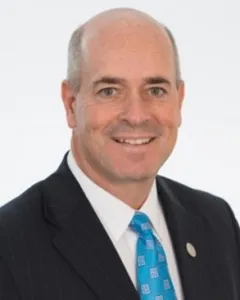What are some COMLEX-USA updates that osteopathic students should know about?
We transitioned administrations of COMLEX-USA to Pearson VUE testing centers to maximize access for test takers where and when they prefer. We are always looking to expand access, especially at peak times in the year.
This spring, we worked with Pearson VUE to enhance the highlight functionality in the COMLEX-USA examinations following candidate requests for a more responsive tool.
Why does it take up to 4-6 weeks to get scores back for COMLEX Level 1 and 2-CE, and 8-10 weeks for Level 3?
This time is spent on important quality assurance measures to ensure accurate, reliable, and valid examination scoring and reporting, which is essential to maintaining fairness of the examinations. Test results and administration reports are reviewed and checked thoroughly before the scores are released. We continue to look for ways to shorten these procedures without sacrificing the reliability or fairness of the results.
What about other NBOME programs?
In November 2023 we launched COMAT-SE for osteopathic principles and practice as a way for osteopathic students to familiarize themselves with the style and content of COMAT Clinical Subject questions. This was a common student request in recent years. COMAT-SE for family medicine, pediatrics, and internal medicine will be available in the fall of 2024.
We have updated COMSAE forms for student purchase with answer keys, also in response to student feedback. This provides users with the ability to identify specific content areas for additional learning.
What are some new developments in the NBOME’s advocacy work?
Residency program leadership in eight specialties came forward with public statements supporting a holistic residency application process, osteopathic applicants, and COMLEX-USA as part of application review of those applicants. These specialties are family medicine, psychiatry, physical medicine and rehabilitation, pediatrics, anesthesiology, obstetrics and gynecology, emergency medicine, and internal medicine. Taken together, these specialties comprise more than 84 percent of DO senior matches.
These statements indicate that program directors value DOs and the COMLEX-USA credential, and do not want DO students to feel they need to take any other examination to demonstrate competency for residency. In addition to record high match and placement rates for DOs, another outcome is decreasing numbers and percentages of DO students in the past two years are electing to take a USMLE exam.
We have also made outreach to over 350 residency programs to advocate for use of COMLEX-USA when considering osteopathic applicants. Many of our outreach efforts start with tips from DO students. If you encounter programs that don’t accept DOs for VSAS/audition rotations or that ask DO students for USMLE scores, please let us know.
The Core Competency Capstone for DOs (C3DO) is in its second phase. What can you tell us about it?
C3DO was implemented to pilot a national standardized assessment for osteopathic clinical skills administered at colleges of osteopathic medicine (COMs). These pilots test doctor-patient communication skills, history-building, hands-on physical examination skills, and performance of OMT. In Phase 1 of the pilot, we partnered with four COMs, and the initial results were promising. Phase 2 administrations began in March 2024 with 8 COMs at 9 locations. Phase 3 pilot discussions are underway to test improved technical platforms and explore future uses of C3DO. Students are part of the process: there are two student leaders on the C3DO Advisory Panel, and every student who participates completes a post-activity survey.
How is the NBOME working to incorporate artificial intelligence into the assessment process?
In December 2023, the NBOME launched an Artificial Intelligence Task Force, which is developing policies to cover potential issues such as security, ethical use, and copyright. We are exploring AI in several areas, including the use of natural language processing in scoring of COMLEX-USA Level 3 clinical decision-making. We are also investigating how generative AI may be employed to scan for bias and fairness in test content and blueprints and to further align COMAT learner-centered objectives with evolving COM curricula.
How does NBOME engage with osteopathic medical students?
In many ways! Our Student Experience Panel meets several times a year, with membership representing a diverse group of students--including ACOFP's student chapter! We connect with students directly during our visits to COMs, and regularly update the Student Osteopathic Medical Association and the Council of Osteopathic Student Government Presidents. Additionally, the NBOME Board of Directors (Board) Liaison Committee includes two student representatives who engage directly with the Board.






Leave a commentOrder by
Newest on top Oldest on top